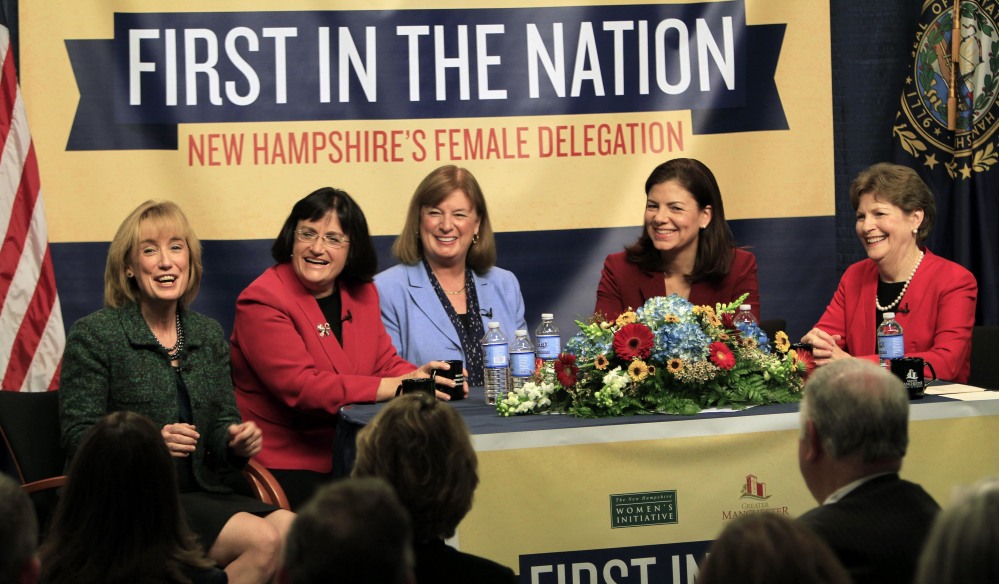CONCORD, N.H. – When it comes to women in elected office, Maine stands out for longevity, Vermont for relatively high representation in its Legislature and New Hampshire for achievements across all levels of government.
As Democrat Hillary Clinton seeks to become the nation’s first female president, though, an analysis by The Associated Press finds that women in the U.S. remain significantly underrepresented at all levels of elected office. Though women make up more than half of the American population, they account for just a fifth of all U.S. representatives and senators and a quarter of state lawmakers. They serve as slightly more than a tenth of governors, in only six states, including New Hampshire.
Democrat Maggie Hassan is the second woman to be elected governor of New Hampshire, following Democrat Jeanne Shaheen. Republican Vesta Roy was briefly governor after the death of Democratic Gov. Hugh Gallen in 1982.
Shaheen, who became the state’s first female U.S. senator in 2009, was part of the nation’s first all-female congressional delegation. In 2012, Democrats Carol Shea-Porter and Annie Kuster were elected to the U.S. House, joining Shaheen and Republican Sen. Kelly Ayotte. In past years, New Hampshire also was the first to have a female governor, state Senate president and House speaker at the same time and the first to have a female majority in its state Senate.
The current New Hampshire Legislature is 29 percent female, compared to a national average of 24 percent. With 424 members, the state’s extremely large citizen Legislature provides an easy entry into politics and a strong training ground for women, said Mary Jo Brown, chair of the New Hampshire Woman’s Foundation board of directors.
“Women who excel at retail politics have an opportunity to meet more of their constituents, shake their hands and have a conversation with them,” she said. “And it just simply makes the barrier to entry lower.”
The state’s tradition of volunteerism also plays a role, Brown said, as does what she calls “deliberate mentoring.”
“When you listen to these women political figures, they talk a lot about who mentored them and who they will mentor in the future,” she said. “It’s a pride point for the state of New Hampshire, and it will continue. It’s on both sides of the aisle.”
In Maine, where the state Legislature is also 29 percent female, there has never been a female governor, though women have long served in Congress. Republican Margaret Chase Smith served in the U.S. House, filling her husband’s seat after he died, from 1939 to 1949. She then served 24 years in the U.S. Senate, making her the longest-running Republican woman in that chamber.
Smith is one of three women to have served in the House from Maine, along with current Democratic Rep. Chellie Pingree and Republican U.S. Sen. Olympia Snowe, who also started in the House before winning election to the Senate. Republican Susan Collins, first elected in 1996, is the third Maine woman to serve in the Senate.
While Vermont has not sent any women to Washington, it ranks second only to Colorado in the percentage of women in the state Legislature, at 41 percent. Vermont has had one female governor, Democrat Madeleine Kunin, who served from 1985 to 1991.
Send questions/comments to the editors.



Success. Please wait for the page to reload. If the page does not reload within 5 seconds, please refresh the page.
Enter your email and password to access comments.
Hi, to comment on stories you must . This profile is in addition to your subscription and website login.
Already have a commenting profile? .
Invalid username/password.
Please check your email to confirm and complete your registration.
Only subscribers are eligible to post comments. Please subscribe or login first for digital access. Here’s why.
Use the form below to reset your password. When you've submitted your account email, we will send an email with a reset code.